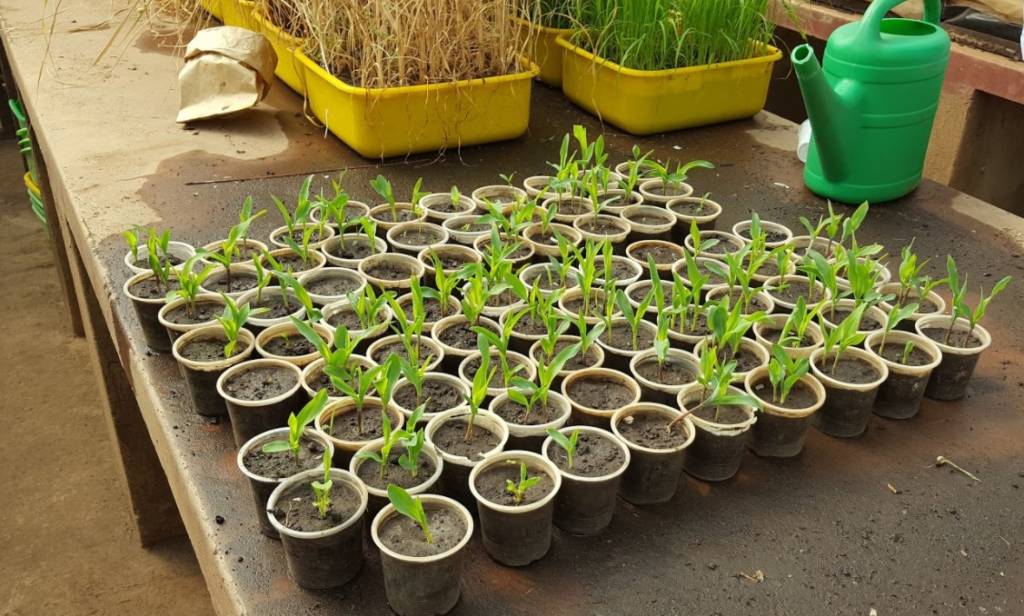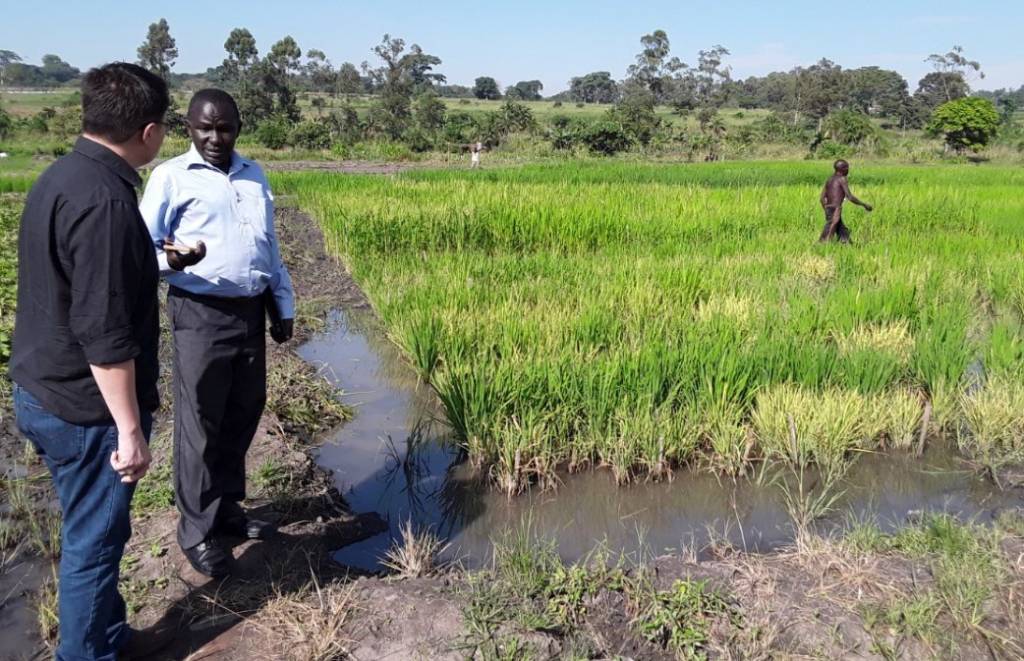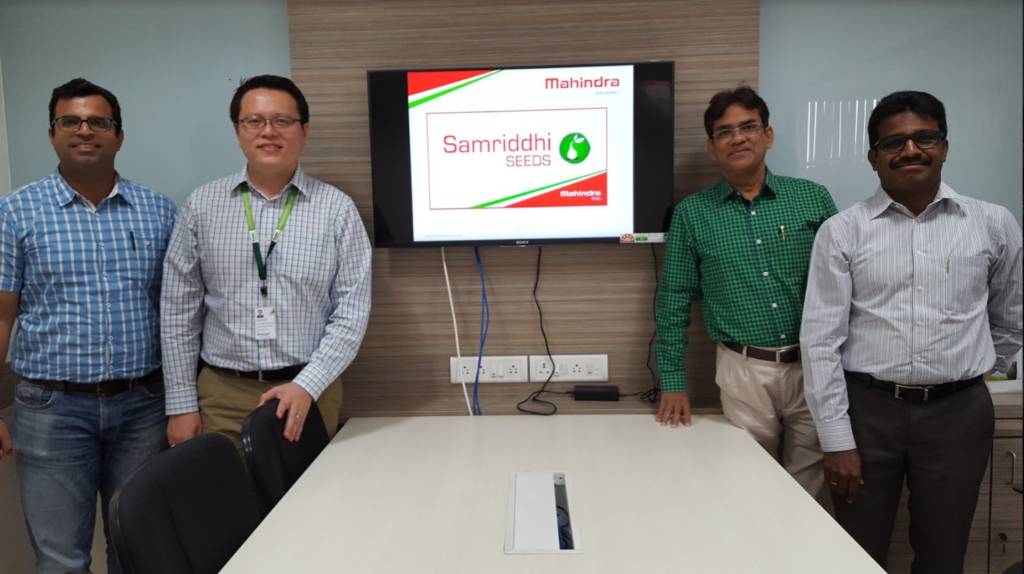ICRISAT groundnut breeding program at Patancheru, Hyderabad had submitted ~18,000 sample for the first groundnut SNP panel containing traits markers for oleic profile, rust resistance and late leafspot. Early generation screening of these three traits enables the breeding program to discard huge portion of segregation materials, savings valuable breeding resources. The team was able to finish sampling process in less than 10 days, sampling logistics remains a bottleneck and this is a key area for improvement.
Deployment of AK-EP100 leaf puncher to various CGIAR centers
As of May 2017, CIMMYT-Kenya, CIMMYT- Mexico, IRRI-Philippines, IRRI-Burundi, ICRISAT-India, ICRISAT- Malawi, AfricaRice- Ivory Coast, CIP- Peru, CIAT- Colombia and IITA- Nigeria are all equipped.
Two panels of IRRI HTPG markers are now available via IRRI Genotyping Service Lab to all potential users.
http://gsl.irri.org/genotyping/trait-based-genotyping/10-snp-panel
Excellence in Breeding Platform meeting (EiB), March 13-15, Amsterdam. HTPG project is one of the key flagship projects under EiB Module 3- Genotyping and Sequencing. The meeting is aimed at strengthening collaboration across the five modules in EiB with participants from various CGIAR centers and NARS. http://excellenceinbreeding.org/

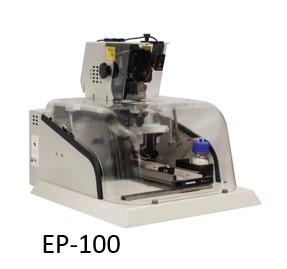
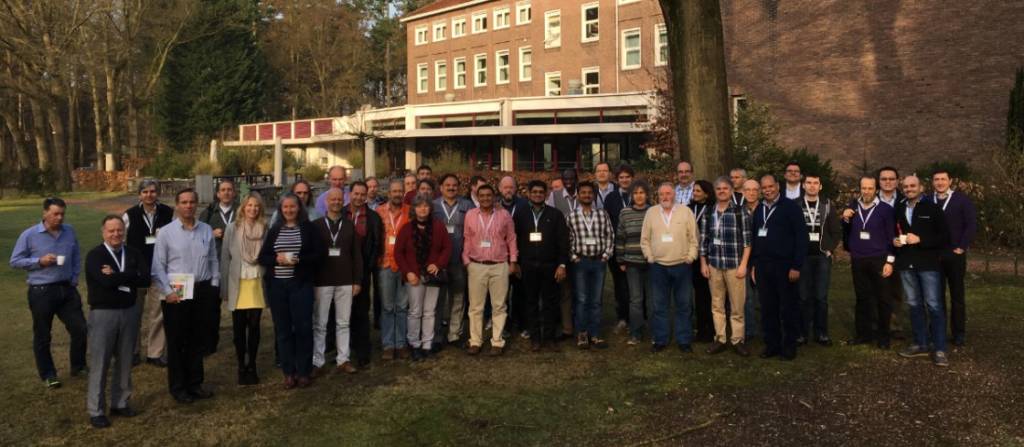
Bangladesh Rice Research Institute (BRRI) among the early users of HTPG platform. Under the Transforming Rice Breeding (TRB) project, BRRI is expected to undergo a series of breeding program modernization efforts, which include modified single seed descent with field rapid generation advancement and the use of low-density markers platform for forward breeding and hybridity testing for breeding crosses.



Visit to National Crops Resources Research Organization (NaCRRI) in Uganda was well received by director Dr. Godfrey Asea. Dr. Asea has appointed Dr. Julius Pyton Sserumaga (maize program scientist) as NaCRRI’s key contact for HTPG project. According to Dr. Sserumaga: “HTPG platform will enable fast tracking of the genotypes with desirable genes for resistance and enable forward breeding pipeline within NARS at a much low cost”. NaCRRI will soon be using various marker sets developed by CGIAR centers in crops such as maize, rice, potato, common bean, cassava, cowpea, etc.
In order to accelerate genetic gain for various biotic and abiotic stresses in rice, Dr. Jimmy Lamo will be utilizing HTPG marker panels developed by IRRI in the coming month for his early generation screening.
MOU between HTPG project and Kansas State University (KSU) officially signed. KSU’s computer science department and Wheat Genetics Resource Center will jointly develop an android tracking app “Verify” to simplify selection process in the field post genotyping. The 2 weeks turn-around time from HTPG platform coupled with “verify” are expected to bring significant changes on how breeding programs can utilize genotyping services in the near future. Beta version of Verify is expected to be available by Q4, 2018.
Deployment of rugged android device to all HTPG- CGIAR partners. The rugged device can be used for various sampling and data collection apps such as Phenoapps and KDSmart to improve breeding program efficiency.
Phenoapps: http://www.wheatgenetics.org/phenoapps
KDSmart: http://www.kddart.org/kdsmart.html
First public private partnership under HTPG. Mahindra seeds will soon be utilizing various rice and maize markers developed by CGIAR research programs in their breeding pipeline. From left: Pawan Khera (Mahindra seeds), Eng Hwa (ICRISAT), Akhtar Ali (Intertek), Umashankar Ponnusamy (Mahindra seeds).
